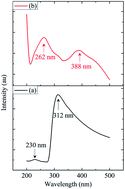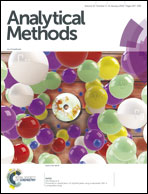Graphene oxide–ZnO nanocomposite modified electrode for the detection of phenol
Abstract
In the present study, a ZnO functionalized graphene oxide (GO) modified glassy carbon electrode (GO–ZnO/GCE) was used for the electrochemical sensory detection of phenol. The prepared material was characterised using cyclic voltammetry (CV), square wave voltammetry (SWV), ultraviolet-visible spectroscopy (UV-Vis), Fourier transform infrared spectroscopy (FTIR), X-ray diffraction (XRD), scanning electron microscopy (SEM), transmission electron microscopy (TEM) and Raman spectroscopy. The parameters, such as the scan rate, pH, comparative study, stability, repeatability and interference, were optimised for the experimental study. The result of the study revealed that GO–ZnO exhibited favourable electrochemical behaviour for phenol oxidation, which was assigned to the joint efficiency of the ZnO and GO properties. An electrochemical sensor based on GO–ZnO exhibited excellent electrochemical performance towards the detection of phenol when compared to GO and bare GCE. The peak current demonstrated a linear relationship with phenol concentration in the range of 5–155 μM. Depending on the signal-to-noise characteristics (S/N = 3), the limit of detection for phenol was observed to be 2.2 nM. In addition, the electrochemical sensor showed excellent selectivity, stability and repeatability in the experimental studies. Based on our analysis, it can be considered that the GO–ZnO based phenol sensor has great potential in different applications requiring the detection of trace amounts of phenolic compounds.



 Please wait while we load your content...
Please wait while we load your content...